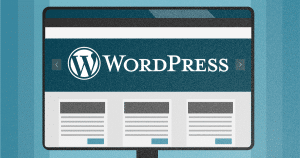Email marketing is one of the most common forms of digital marketing.
It helps you get messages to your audiences about offers, blogs, promotions, new items, and product and service information.
Email marketing allows you to get directly in front of individual contacts without spending money that other methods like paid advertisements can take to be successful.
But in order to get your important email marketing messages to a wide audience, you need to build your email lists.
After all, email is the primary method of communication that you have with your prospects, leads, and customers.
List building allows you to increase your list numbers and gives you more opportunities to segment and divide your audiences into key groups.
In this article, we’ll take a look at what list building is and why it is important to your brand.
We’ll also go over the best practices your brand needs to follow in order to build better lists and get the most out of email marketing efforts.
- What is List Building?
- Why is List Building Important?
- Best Practices to Build Your Email List
- Wrap Up
What is List Building?
List building refers to the process of finding and collecting emails from your visitors and users.
This allows you to grow the database you have to complete your email marketing efforts with. It also gives you more opportunities to increase the potential communication you have with your prospects and current customers.
List building helps create more engaged and interested subscribers and contacts.
You can use list-building techniques to gain a wider audience to improve your open and click metrics, which further allows you to improve the conversions you get out of email marketing efforts.
You can gather more email addresses through your website, virtual and in-person events, social media, sign-up sheets, premium offers, and more.
All of these tactics help to create a better email marketing strategy and pull in more opportunities for conversion among your audience.
Why is List Building Important?
List building helps you fill your top-of-funnel marketing efforts.
Breaking it down, it becomes a numbers game. When you have a larger audience to send your emails to, you have a better chance that those emails will be opened.
Once more emails are opened, there is a higher chance that the CTAs in those emails will be clicked. With more people clicking on CTAs, you have more chances for conversions into customers.
List building also gives you more opportunities to segment and target key groups of your audience.
When you have more names in your email database, you can work on your segmenting strategy and personalize messages to different groups.
That also helps you improve your odds of increasing conversions and gaining more customers.
Another reason that list building is important is that email is a highly cost-effective way of marketing.
Rather than spending time on more costly efforts like paid advertisements, email can be incredibly effective in returning the best ROI.
Businesses of any size can benefit from email marketing and list-building best practices.
Best Practices to Build Your Email List
Now that you understand what list building is and why it can bring substantial benefits to your business, let’s take a look at different strategies and best practices you can employ to build out your email lists more effectively.
1. Create Enticing Content
One of the best ways to encourage sign-ups on your email lists is to create enticing content.
When people know that you are capable of providing quality content on your website or blogs, they are going to be more willing to sign up to receive more content like that.
Creating consistent, high-quality content takes time, but will guarantee more email sign-ups and improved list building.
2. Utilize Social Media
Your social media followers have already indicated that they are interested in your brand by following your accounts or liking your pages.
Take advantage of that commitment to your brand by offering them the chance to join your email list.
Adding a link to your bio or occasionally sharing your sign-up link can help you improve your list building.
3. Add Pop-Up Opportunities on Your Website
While an overabundance of pop-ups on a website can be irritating, they serve a purpose.
By having a pop-up to join an email list on key pages like your blog, you can capture your audience while they are engaging with your content.
That allows you to gather more names and increase your list building when people are already interacting with your brand.
4. Offer Exclusive Notifications
One of the benefits of being on an email list is the types of notifications you can get from your emails.
Offering exclusive notifications that aren’t offered to other customers is a great way to encourage people to sign up for your lists.
People like to be involved in exclusive groups, so you can use psychology to encourage list building.
5. Gate Your Key Content Offerings
If you’ve created a great content offer like an ebook or online quiz, don’t just give it out “for free”.
By gating the content behind a form, you can encourage more people to give you their email addresses in exchange for in-depth, developed, and helpful content.
Just make sure that your offer is worth the exchange of an email address.
6. Promote Discounts and Deals
Another customer benefit of being a part of an email list is the discounts and deals that you can receive.
Sending out an email promoting a flash sale, new deal, or limited-time discount is a great way to prove to your email recipients that they are getting something beneficial out of your email.
Without great offers, they might unsubscribe since they don’t feel as though they are getting enough out of the communication.
7. Tighten Your Options
If you have a wide variety of forms and links on your blog and website pages, it can be hard to direct your visitors to the sign-up form to join an email list.
By narrowing down your options and ensuring that there is a tight pipeline to guide your audience to a single option, you can improve your list building and encourage your visitors to take the same action rather than spread out to other links and pages.
8. Rethink Your Messaging
One of the ways to improve your list-building efforts is to rethink the messaging you are using.
Make sure to use language and phrases that explain the benefits of your offerings and why a visitor should want to sign up for your email list.
You should also work on keeping your messages concise — no one wants to try and read through a dense paragraph to learn why they should sign up for an email list.
9. Optimize Your CTAs
Another area to improve alongside your messaging is your CTAs.
When your CTAs are interesting, people are more likely to take the action you describe in your forms and links.
Visitors want to take quick action and avoid difficult decisions.
CTAs should be short, persuasive, and to the point. That allows you to encourage snap decisions and quick sign-ups.
10. Use a Scrolling Sidebar Form
While having an email sign-up form at the bottom of a webpage or blog page is standard, you can also add a form on the side of a page.
A scrolling sidebar form alongside a blog can help keep the option of signing up at the top of mind.
It also can help a visitor notice the form more clearly than the standard form at the bottom of the page, which the eye can easily glance over.
11. Take Advantage of Events
Whether you have in-person or virtual events, both options provide great opportunities to garner new email addresses.
While most emails are collected on your website, events give you the opportunity to present the option to new groups who may not be aware of your brand.
By making an email field required on the sign-up pages for events, you can collect a new group and improve your list-building efforts.
Wrap Up
List building is essential to growing your email audience and getting the most out of your email marketing efforts.
When you have a larger pool of contacts you can reach through email marketing, you can create better personalization and segmenting strategies.
That allows you to monitor and improve your overall digital marketing strategies and convert more leads through your email funnel.
If you want to learn more about creating an email funnel, then check out our post on email funnels!
There you’ll learn what an email marketing funnel is and why it helps with converting new leads and growing your business.








